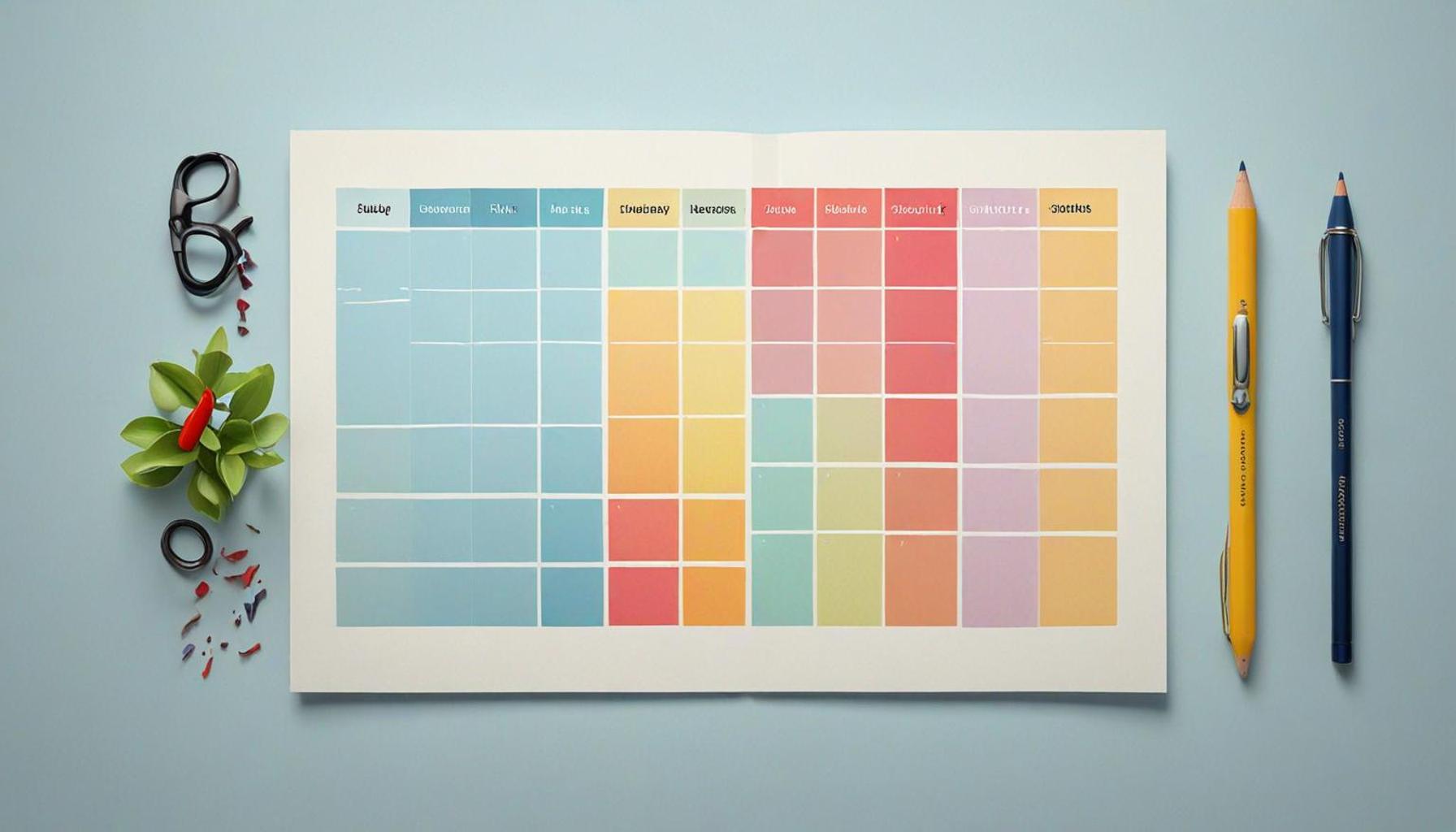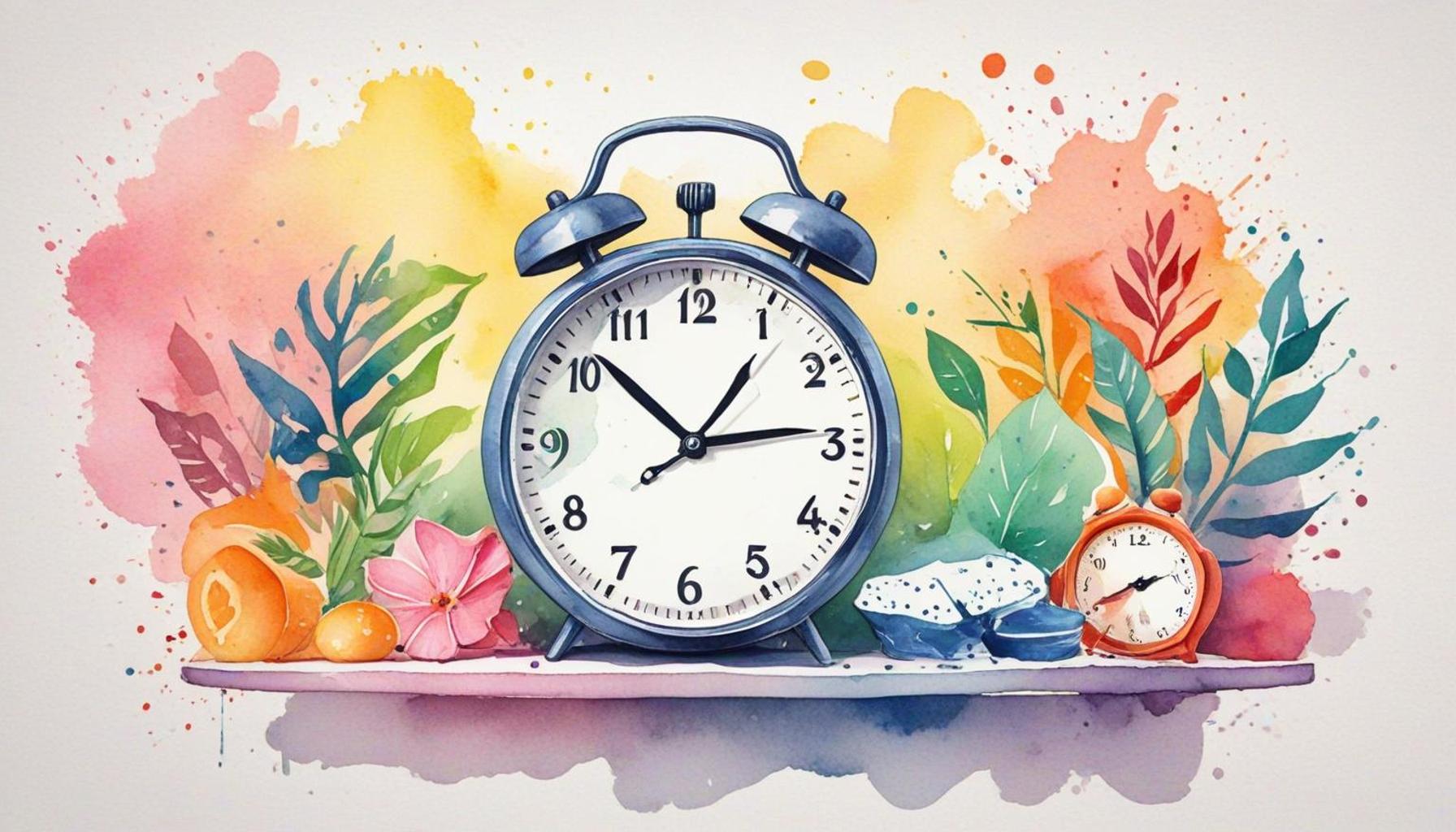Minimalism and the Art of Planning: Creating a Schedule that Reflects Your Values

Discovering True Value in Your Schedule
In a world overflowing with distractions, the concept of minimalism offers a refreshing perspective on how we plan our lives. It is more than just an aesthetic; it’s a lifestyle choice that emphasizes simplicity and intentionality. By adopting minimalist principles, you can create a schedule that not only enhances productivity but also aligns with your core values.
Understanding how to incorporate minimalism into your planning involves several key aspects, each designed to streamline your daily activities and eliminate unnecessary clutter from your routine. One of the primary benefits of this approach is that it fosters a sense of clarity. By distilling your priorities to what truly matters, you can ensure that your time is spent on tasks that resonate with your goals and aspirations. For instance, instead of attempting to juggle ten responsibilities, focus on just three tasks that will advance your most significant projects. This method can lead to higher quality work and reduced feelings of overwhelm.
Intentionality plays a crucial role in minimalist scheduling. Making conscious decisions about how you allocate your time can transform your daily experience. Start by examining your current commitments; ask yourself if each one contributes to your long-term vision. If not, it may be time to let go. For example, if attending weekly meetings feels unproductive, consider proposing an agenda that focuses on essential topics or suggest less frequent gatherings to maximize effectiveness.
Another essential aspect is flexibility. While structure is important, life is unpredictable. Allowing room for spontaneity within a minimalist framework can help maintain motivation and enthusiasm. Scheduling regular breaks throughout your day not only helps to recharge your mind but also provides an opportunity to reassess your priorities. Implementing techniques like the Pomodoro Technique, where you work for 25 minutes followed by a 5-minute break, can enhance focus and productivity.
To ensure that your commitments align with your values, make it a habit to regularly review your schedule. Take time each week to evaluate your activities: Are they enriching your life? Are they in sync with your personal goals? This reflective practice can guide you in eliminating activities that may have initially seemed worthwhile but ultimately detract from your overall well-being.

By embracing the art of minimalism in planning, you can cultivate a life rich in purpose and fulfillment. Whether you are a busy professional in New York, a busy parent in Los Angeles, or a student juggling multiple responsibilities, adopting these principles can help foster a meaningful existence. The journey towards a simplified schedule might just lead you to a more intentional way of living. Are you ready to embark on this transformative path? Take the first step towards a more focused and enriching life today!
DON’T MISS OUT: Click here to discover how to master the art of saying no
Implementing Minimalism in Your Planning Process
Embarking on the journey of minimalism requires both a commitment to change and a clear strategy to refine your planning process. When integrating minimalist principles into your scheduling, the first step is to identify your core values, which act as the foundation for a purposeful life. This alignment not only helps in focusing your time on what truly matters but also discourages engagement in activities that lead to stress and burnout.
Consider breaking down your values into distinct categories. Here’s a simple framework to guide your identification process:
- Personal Growth: What skills or knowledge do you wish to acquire?
- Health and Wellness: How important is physical fitness and mental well-being to you?
- Relationships: What commitments do you have toward friends and family?
- Career Aspirations: What are your professional goals and ambitions?
- Creativity and Hobbies: What personal interests do you want to explore or cultivate?
Once you’ve established a clear understanding of your values, the next step is to prioritize them. With countless obligations vying for your attention, having a well-ordered list helps in deciding where to invest your time and energy. To do this effectively, consider categorizing tasks using a system of importance:
- Critical Tasks: Activities that directly relate to your core values and long-term goals.
- Supportive Tasks: These are helpful but not essential. They support your critical tasks.
- Optional Tasks: Responsibilities that provide little value and can be dropped or delegated.
As you sort through your commitments, observe if any tasks from the optional category consistently drain your time but yield minimal benefits. This is where the principles of minimalism shine, allowing you to confidently step away from engagements that do not enrich your life.
Another vital component of a well-planned schedule is time blocking. This technique divides your day into focused segments dedicated to specific activities. Time blocking not only enhances focus but also helps in reducing procrastination. Start by assigning blocks of time to your critical and supportive tasks, ensuring you dedicate sufficient attention to your most important priorities. Additionally, incorporate time for self-care and relaxation, as this balance is essential for sustained productivity.
Finally, remember that the minimalist journey does not end once you’ve crafted your schedule. It requires a continuous process of evaluation and adjustment. Life is ever-changing, and your values may shift over time. Regularly revisit your schedule to ensure it continues to serve your evolving needs and reflect your true self. The act of regularly scrutinizing commitments can empower you to confidently adjust your course, aligning your daily practice with your ultimate vision of a balanced and fulfilling life.
| Category | Key Features |
|---|---|
| Prioritization | Helps to identify what truly matters, cutting through distractions. |
| Clarity | Enhances focus, leading to more purposeful actions and decisions. |
| Work-Life Balance | Encourages time management that reflects personal and professional values. |
| Simplicity | Reduces overwhelm by focusing only on essential tasks, allowing for greater mental clarity. |
In the pursuit of minimalism, understanding how to effectively prioritize is key. By identifying what is truly important, individuals can cut through the noise and focus on tasks that align with their core values. This not only fosters productivity but enhances the clarity of purpose in everyday planning. The resulting focus allows people to channel their energy into meaningful actions rather than being sidetracked by the trivial.Furthermore, achieving a harmonious work-life balance becomes increasingly attainable when a schedule is designed to reflect personal priorities. A minimalist approach to planning encourages the allocation of time that aligns with both professional and personal commitments, paving the way for a lifestyle that is not just about achievement, but fulfillment. Simplicity is a hallmark of minimalism, where reducing unnecessary tasks leads to a marked decrease in overwhelm. Adopting this principle can offer immense mental clarity, allowing individuals to engage more profoundly with their passions and responsibilities alike.
DISCOVER MORE: Click here to learn how intentional living can enhance your organizational skills
Embracing Flexibility in Your Minimalist Schedule
A key element of effective scheduling through a minimalist lens is recognizing the need for flexibility. Life can be unpredictable, and rigid schedules can often lead to frustration when unexpected events arise. Therefore, it’s essential to create a schedule that accommodates changes while still emphasizing your core values. Implementing a buffer zone in your time blocks can help you adapt to shifting priorities and obligations without derailing your entire day.
For instance, when planning your week, consider leaving open time slots between critical tasks. This strategy allows you to handle unforeseen interruptions and ensures that you still have opportunities to engage with your priorities, even if the unexpected occurs. A study published by the American Psychological Association found that individuals who practiced flexibility in their planning reported higher levels of satisfaction and reduced stress. This finding reinforces the notion that embracing adaptability can lead to a more balanced approach to minimalism in your life.
Incorporating Intentional Breaks
While it may seem counterintuitive to incorporate downtime into a scheduled day, intentional breaks are vital for maintaining productivity and overall well-being. The Pomodoro Technique, for instance, encourages individuals to work in focused bursts of 25 minutes followed by a five-minute break. This method not only enhances concentration but also allows for mental rejuvenation, keeping fatigue at bay.
When designing your minimalist schedule, integrate intentional breaks into your time blocks. These moments provide opportunities to reflect on your values, practice mindfulness, or engage in activities that bring you joy. By treating breaks as necessary components of your day rather than mere pauses, you further embrace the minimalist philosophy of prioritizing what truly enriches your life.
Utilizing Technology Mindfully
In today’s digital age, technology can either aid or hinder your journey toward minimalism. To align your scheduling with your values, consider using digital tools designed to optimize your time management, such as calendar apps or task management software. However, it’s crucial to approach these tools mindfully to avoid the trap of digital clutter. Keep your digital workspace organized and free of distractions by regularly categorizing tasks and archiving completed ones.
Additionally, be selective about the apps and tools you choose. For instance, tools like Trello or Todoist allow users to visualize their tasks while fostering clarity in how time is allocated. However, be cautious of overcomplicating your schedule; choosing two or three essential tools that resonate with your values is often more effective than overwhelming yourself with a multitude of options.
Establishing a Regular Review Process
A minimalistic approach to planning isn’t just about creating a list of tasks; it also includes a routine for reflection and revision. Set aside a specific time each week or month to review your schedule. During this time, evaluate how well your planned activities align with your core values and adjust as necessary. Are you spending enough time on personal growth? Are your relationships receiving the attention they merit? Reflecting on these questions allows you to maintain a schedule that is not only functional but also genuinely fulfilling.
Implementing these strategies requires practice and dedication. Much like the philosophy of minimalism itself, the process is about refining and rediscovering what works best for you as you navigate the complexities of life. By focusing on intentionality, flexibility, and regular evaluation, you can cultivate a planner’s mindset that seamlessly aligns with your values, resulting in a more enriched, stress-free existence.
DISCOVER MORE: Click here to learn how minimalism can enhance your time management
Conclusion: Cultivating a Life of Intentionality
As we navigate the complexities of modern life, embracing minimalism in our planning can serve as a powerful tool in reflecting our values. By intentionally curating schedules that prioritize essential tasks and leave room for flexibility, we can create a harmonious balance between productivity and personal well-being. The integration of intentional breaks gives us the mental space to recharge and ponder what truly matters, ultimately leading to higher satisfaction in our daily routines.
Moreover, utilizing technology wisely can enhance our planning process while avoiding the pitfalls of digital clutter. Mindful selection of tools not only streamlines our tasks but also fosters clarity and promotes a focused approach. Regular review processes allow us to align our schedules with our evolving values, ensuring that each commitment made is meaningful and enriching. By asking ourselves deliberate questions during these reflections, we can reaffirm our priorities, enhancing both personal growth and well-being.
In conclusion, the journey toward a minimalist schedule is not just about creating a framework for tasks; it’s about fostering a mindset of intentionality that resonates with our personal values and life goals. As we refine our approach to scheduling, let us remember that every choice we make contributes to a life well-lived. By advocating for simplicity and clarity in our planning, we open the door to a more fulfilling existence—one where every moment reflects who we truly are and what we cherish the most.



